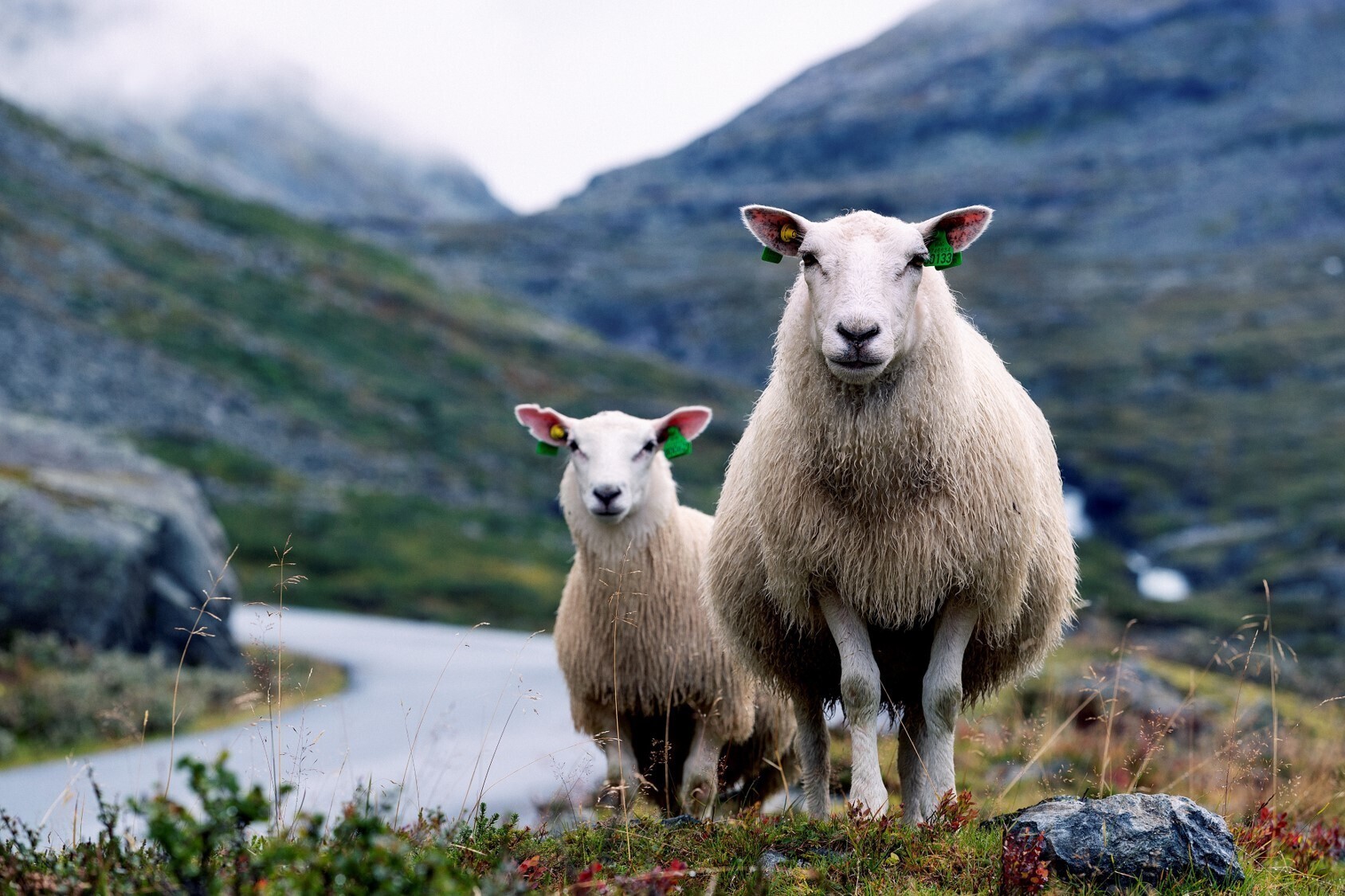Norwegian lambskin or a wool sweater to keep you warm?
The sheep is one of Norway's oldest livestock animals. Both its skin and wool are traditionally used to keep people warm. Every year, there is a playful tug of war between Norilia wool and Norilia hides and skins about how we can best use this fantastic raw material.

Photo: Sune Eriksen
Naturally good
Norwegian ewes and lambs live a good life, grazing outside in forests and mountains. There is plenty of food available, which results in large animals with skins of good size. Norwegian farms are small, many with fewer than 100 adult sheep, and farmers have a focus on animal well-being. All of this contributes to the good quality of Norwegian sheep and lamb skins.
Focus on quality
Norwegian skins have in general few parasites and vegetable matter, which makes refining them into high quality products relatively easy. Norwegian skins are drum salted at the abattoirs and transported in cool conditions to Norilia's hide plant at Skjeberg. Here, each skin is individually inspected and sorted into different classes. Norilia sorts its sheep and lambskins into 28 different classes. Most of this sorting happens in the hectic autumn months, when most of the lambs and sheep are slaughtered
Useful and decorative skins
Norwegian skins are mostly used for the production of Nappa leather for leather jackets and are also increasingly used for the production of handbags. Skins from Norwegian spæl sheep, the more traditional breed of Norwegian sheep, result in beautifully decorative skins.
Visste du at Norilia håndterer 80% av alle norske skinn?








